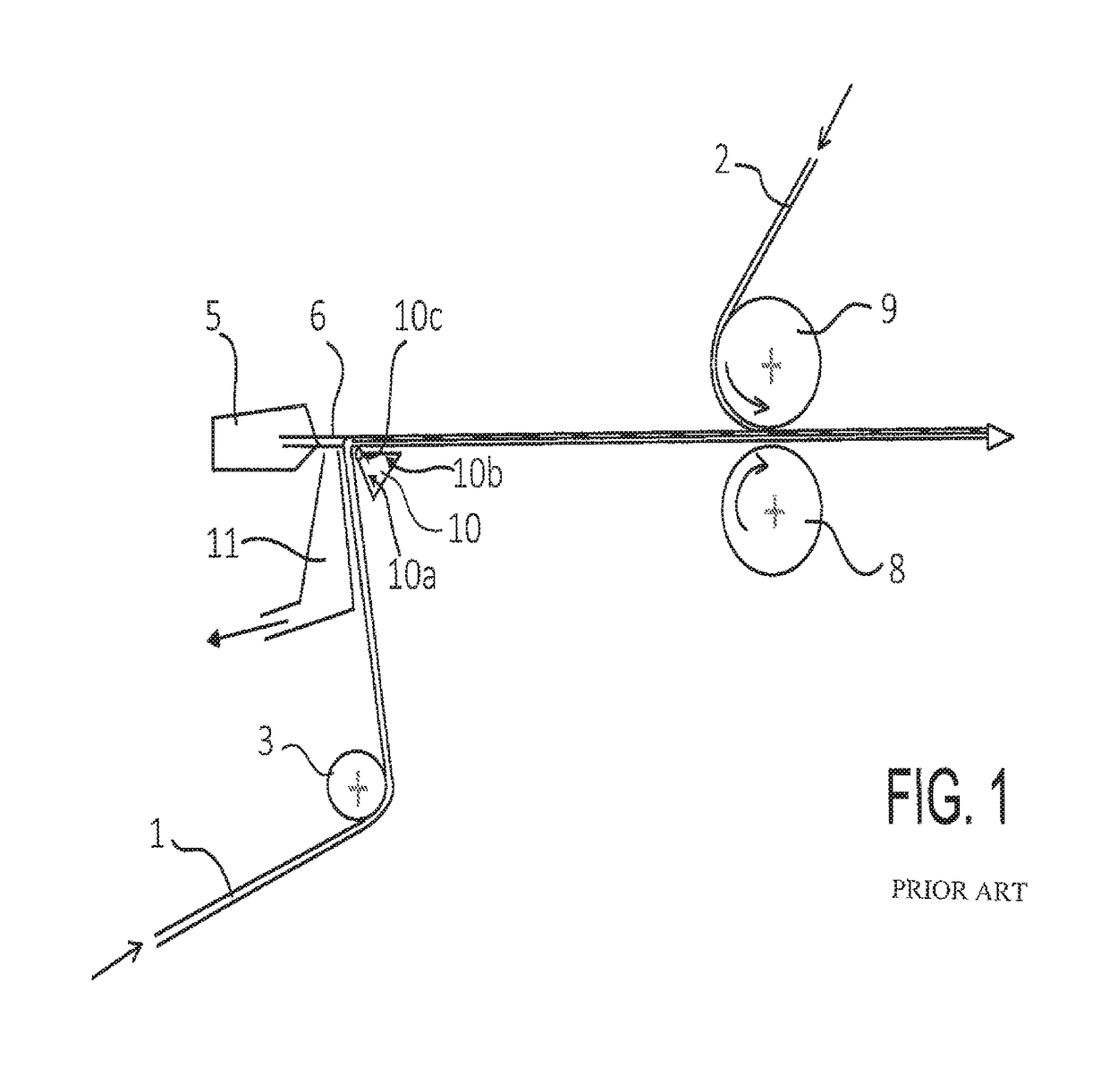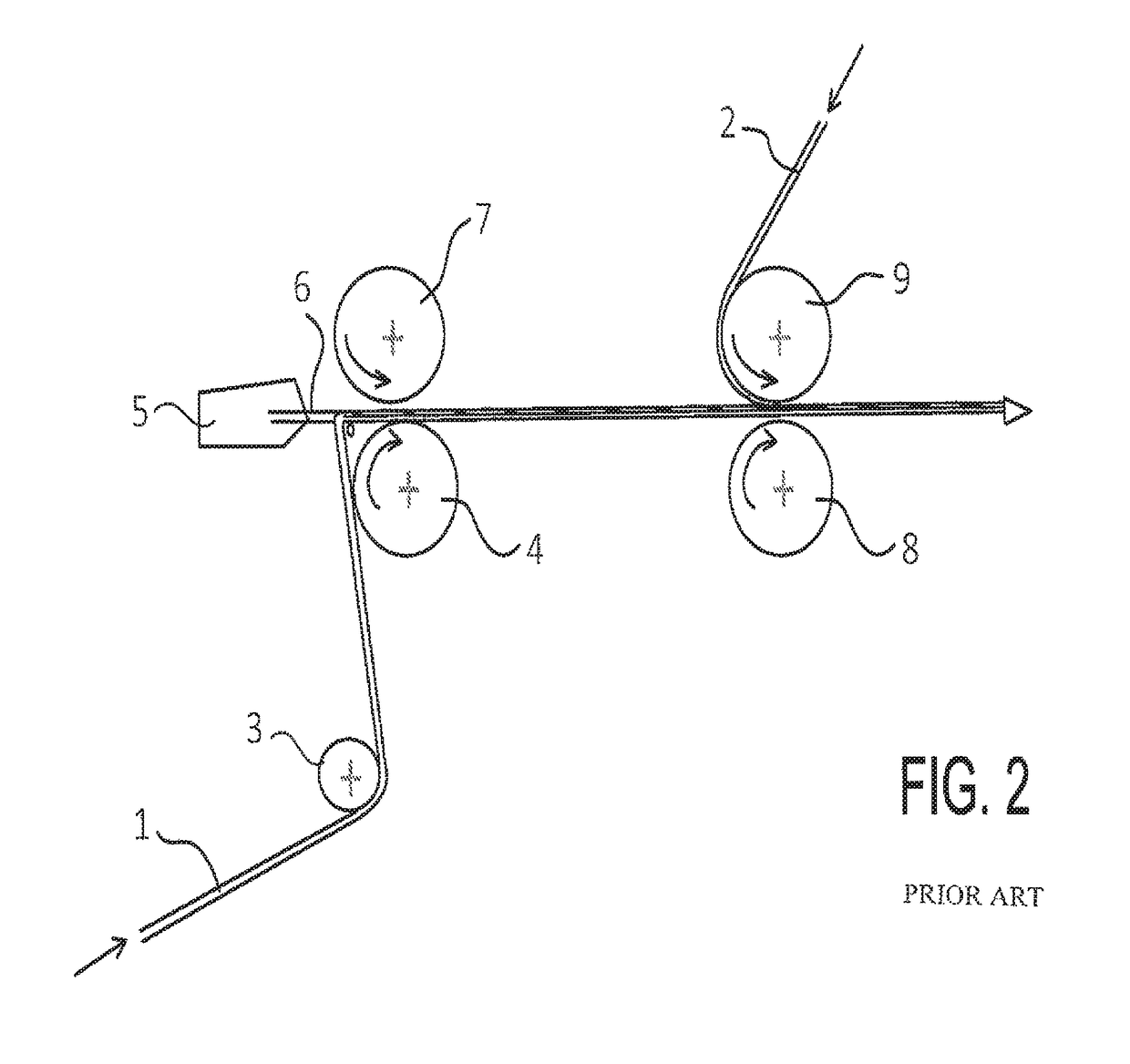Multilayer film for flexible wrapping
a flexible wrapping and multi-layer technology, applied in the field of multi-layer (or laminate) films, can solve the problems of polyurethane type, long time required for completing cross-linking reaction, and need to wait, so as to prevent the delamination of films and ensure cohesion
- Summary
- Abstract
- Description
- Claims
- Application Information
AI Technical Summary
Benefits of technology
Problems solved by technology
Method used
Image
Examples
example 1
[0198]The adhesive composition given in Table 1 is prepared by simple hot mixing of the ingredients at 170° C.
[0199]For this adhesive composition a Brookfield viscosity at 190° C. of 14000 mPa·s and a softening temperature of 117° C. are measured.
[0200]This adhesive composition is used for the manufacture of a composite film comprising 2 layers each constituted by an oriented polypropylene film of thickness 20 μm and bonded together by a layer of said composition of thickness comprised between 3 and 5 μm according to the tests.
[0201]In order to produce this film a laminating machine is used the structure of which corresponds diagrammatically to the device shown in FIG. 1. The 2 films of oriented polypropylene are packaged on a reel of 40 cm standard width. The polypropylene reel to be coated is driven by a motor allowing a speed of movement to be given to the substrate ranging up to 600 m / minute. The coating device 5 comprises a lip nozzle marketed by NORDSON under reference BC 70, ...
examples 2 to 8
[0208]The same experimental protocol is applied with each of the different adhesive compositions the contents of which in constituents are given in Table 1.
[0209]The results of the peel test and of the visual test are also given in Table 1.
[0210]
TABLE 1Content in %Composition12345678Kraton ® D1113BT39.8039.8039.8039.8039.8039.8039.80Vector ® 411139.80Dercolyte ® S11522.39Escorez ® 540049.7534.8324.8859.7014.93Escorez ® 561513.93Escorez ® 1310 LC37.31Escorez ® 2203 LC49.75Regalite ® R10109.9524.8834.8344.78Sylvatac ® RE129.9545.77Irganox ® 10100.500.500.500.500.500.500.500.50Viscosity at 190° C.14000110009000115003000013000700015000(mPa · s)Softening11711311311314011511170temperature (° C.)Extrusion190170170160195185170165temperature (° C.)Peel test at 23° C.2.01.21.12.22.82.20.90.9(N / 15 mm)Visual test33532255
[0211]Vector® 4111 is an SIS copolymer of linear structure having a diblock content of 0% and a styrene content of 19%.
[0212]Compositions 1 to 4 correspond to multilayer films a...
PUM
| Property | Measurement | Unit |
|---|---|---|
| thickness | aaaaa | aaaaa |
| thickness | aaaaa | aaaaa |
| softening temperature | aaaaa | aaaaa |
Abstract
Description
Claims
Application Information
 Login to View More
Login to View More - R&D
- Intellectual Property
- Life Sciences
- Materials
- Tech Scout
- Unparalleled Data Quality
- Higher Quality Content
- 60% Fewer Hallucinations
Browse by: Latest US Patents, China's latest patents, Technical Efficacy Thesaurus, Application Domain, Technology Topic, Popular Technical Reports.
© 2025 PatSnap. All rights reserved.Legal|Privacy policy|Modern Slavery Act Transparency Statement|Sitemap|About US| Contact US: help@patsnap.com


